Republished by Blog Post Promoter
Tag Archives: mind control
PSYCHOBABBLE
Republished by Blog Post Promoter
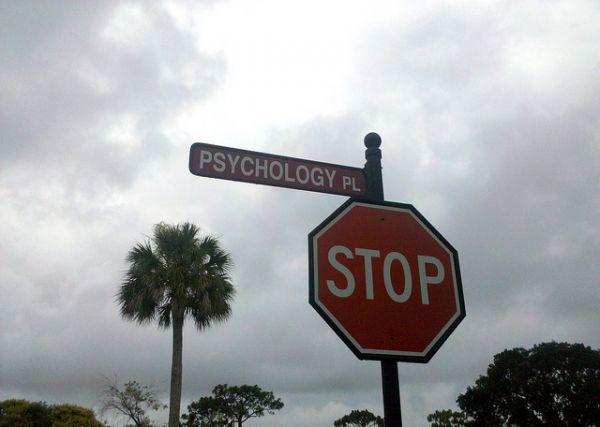
The word “psychology” means, literally: Psyche (The Spirit or Soul) + -ology (the study of). However, the so-called “science” of psychiatry is nothing whatsoever to do with Spirits or Souls. Instead it is a mind control operation funded primarily by governments, as developed, originally, by Nazi medical doctors working to exterminate the “undesirables” of human populations.
Here is a wonderful article about the current “thinking” and “innovation” of the “Priests of Modern Mental Science”. The Lords of Government Mind Control are working VERY hard to invent more new ways to confuse, befuddle and submerge our Immortal Spiritual Selves in a morass of mind-control double-speak, total bullshit, psychiatric chemicals and outright fantasy they pass off on the human population as “scientific fact”. These are the very beings that George Orwell warned us about in the book 1984. And, the very same “prison guards” described in the military transcripts published in the book Alien Interview.
These maniacs are behind every single school yard shooting massacre, every war, and every covert operation being run by every secret service activity on planet Earth. This report illustrates the mind-boggling nonsense of the “science of psychobabble”. Beware and avoid.
“What Are They Doing? My Visit to a Psychology Conference
(Reposted from Neatorama) Article by Alice Shirrell Kaswell, AIR Staff, Interpretive Illustrations by Marian Parry
“In April [1998], it was my privilege to attend the joint convention of the Western Psychological Association and the Rocky Mountain Psychological Association (WRMPA). The four-day event took place at the Albuquerque Convention Center, in Albuquerque, New Mexico. Wandering from room to room, I found many surprising and delightful things.
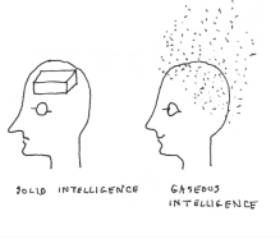 Terror
Terror
For me, the highlight of the convention was a lecture—a prestigious “invited presentation”—by Jeff Greenberg of the University of Arizona. The topic was “Managing the Terror of Being Human: Theory and Research”. The man knows his subject cold, as you can see from this description he wrote in the convention guidebook:
Biography
My terror began in the Bronx in 1954. It was amplified by my undergraduate experience at Penn and my graduate training at SMU and the University of Kansas. It has continued to grow over my 15 years at the University of Arizona.
Ignore the Face
I also enjoyed a lecture by Joseph J. Campos of the University of California at Berkeley. Campos raised the question, “Does the Face Really ‘Express’ Emotions?” His answer was a ringing No, “except under very special conditions.”
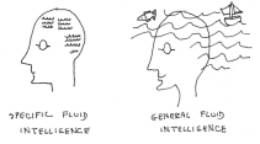 Fluid Meaning
Fluid Meaning
I accidentally touched off a minor incident the day after Georgia Tech professor Randy Engle gave a presentation on the topic “Working Memory Capacity, Controlled Attention and General Fluid Intelligence”. I asked nine experienced psychology professors to define the phrase “general fluid intelligence”. None of them could, although one did opine that “the lecturer probably knows what it means.”
Poster Sessions: Smells, Oils, a Princess, and Hair
Although there were many stimulating lectures, the most exciting action was in the poster sessions. In case you’ve never been to a poster session, I should explain the general idea. Dozens of student teams, and the occasional professor, each hung up a poster describing their recent projects. In each session, you can stroll the aisles and see anywhere from 20 to 50 or more posters.
their recent projects. In each session, you can stroll the aisles and see anywhere from 20 to 50 or more posters.
The first poster session, held on Thursday at 9:00 a.m., celebrated the general themes “Human Learning, Memory, and Cognition.” I was especially roused by three special posters: “Effects of Pleasant Ambient Odor on Memory Recall;” “Flash-bulb Memories for the Death of Princess Diana;” and “Essential Oils’ Effects on Memory.”
An 11:00 a.m. poster session concerned “Applied Psychology.” One poster discoursed on “The Effects of Odor and Stress on Mood.” Another, more abstruse, was entitled “Perceived Age of Teenage Females: Effect of Complexion, Makeup, Hairstyle, and Apparel.” I found it provocative.
A 1:00 p.m. poster session delved into “Social Issues”, and featured a gem of a poster called “The Influence of Male Facial Hair on Perceptions of Age.” It, too, must be described as provocative.
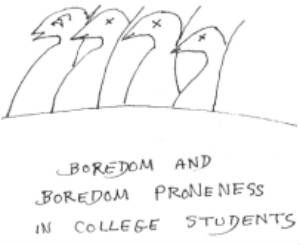 Boredom
Boredom
The convention was a multi-ring circus, with more simultaneous wonders than any one person could take in. Also at 1:00, but down the hall from the poster session, Mary B. Harris and Keith Zvoch of the University of New Mexico presented their paper on “Boredom and Boredom Proneness in College Students.” Some members of the audience found it stimulating.
More Smells, Parking, and Arousal
Friday morning was lovely in Albuquerque, with pink and blue skies, comfy temperatures, and psychologists in every nook and cranny. The 10:00 poster session was all about “Brain Function and Sensory Process.” There was an impressively worded poster entitled “Anterior EEG Asymmetry and Odor Hedonics: Gender Effects”. Not far away, an anxious crowd perused a poster called “Human Foraging Strategies: Outcomes for Campus Parking.” A knot of students pored intently over a poster called “Arousal, Sleep, and Time Perspective in University Students.” Sadly, only a few of them even glanced at the poster with the most intriguing title: “Can a Rat Who Has Never Known Water Know Thirst?”
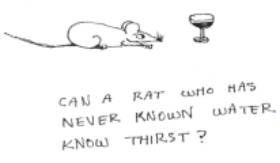 Smiles Different Similarities, Photos
Smiles Different Similarities, Photos
A noontime poster session on “Social-Personality Psychology” contained two special treats: “How Smiling and Pupil Dilation Affect Perceived Personality” and “Stereotype Reduction Through Similarity Differences.”
The noon hour also featured another prestigious “invited presentation” in the main ballroom. Roger S. Ulrich of Texas A&M University described his research on patients in surgical recovery rooms. As the patients emerge from their anesthetic haze, Ulrich shows them big color photographs of the great outdoors. If I understood him correctly, Ulrich said that this “improves health outcomes,” and that therefore his is actively marketing his services to hospitals and clinics.
At 1:20 in the same ballroom, the editor of the Annals of Improbable Research delivered another of the convention’s “invited presentations.” The topic was “Improbable Research and the Ig Nobel Prizes.” Curiously this was the only session in four days in which I saw people laughing. It began at 1:20 rather than 1:00 on the dot because the previous lecturer, Roger S. Ulrich, wouldn’t stop talking about how hospitals should buy his nature photos.
Punching, Dolls, and Car Characters
The Friday 1:00 poster session treated us to research on the following topics: “Boxer and Spectators: Perceptions and Characteristics of Pugilism”; “Body Satisfaction in Relation to Media Exposure, Self-Monitoring, and Barbie Doll Ownership”; “Effects of Descriptive Norms and Self-Awareness on Littering”; and my favorite of the day, “Car Color: An Indicator of Driver Personality.”
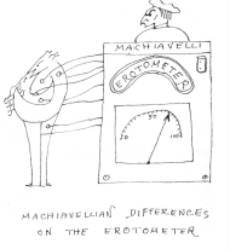 Sex, Sex, Paranoia, Hostility, and Sex
Sex, Sex, Paranoia, Hostility, and Sex
The Saturday early morning poster session delved further into the theme of “Social-Personality Psychology”. I saw a variety of interesting posters: “Situational Capture of Cardiovascular Arousal During an Erotic Episode”; “Machiavellian Differences on the Erotometer”; “Paranoia: Differences in Social Desirability”; and “Hostile Automatic Thoughts: A Validity Study.” Oh—and I shouldn’t forget to mention a crowd favorite: “Hair Stylists; Therapeutic Characteristics and Their Clients’ Levels of Self-Disclosure.” All in all, this session was a most interesting way to begin a Saturday.
And the 10:00 session was, if anything, even better. Its overall topic, “Stress and Coping”, was highlighted by two posters. The first, entitled “Sleep Quality and Anxiety Affect Distress Scores Measured During Finals”, was of special interest to students. The other, “Health Effects of the Interruption of an Emotional Writing Paradigm”, was of special interest to anyone who wanted to know what an Emotional Writing Paradigm is.
The noontime poster session dealt with “Education Psychology.” Three posters stood out from the bunch: “Introductory Psychology Activities Using Van Gogh as a Case Study”; “Predictors of Academic Procrastination in College Students”; and the dryly written yet riveting “Ethical Issues Involving Graduate Teaching Assistants.” A senior professor of my acquaintance saw me contemplating the “Ethical Issues” poster, and stage whispered “They should have called it ‘Can We Sleep Together?'”
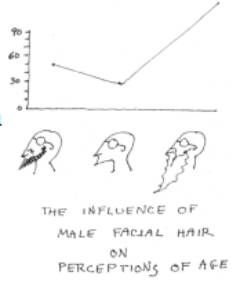 Simulating Boredom
Simulating Boredom
Saturday afternoon, Carl. N. Perlotto, M. Lyn Hoefer, and N. Clayton Silver of the University of Nevada at Las Vegas presented their paper “The Ludic Love Style: Difference in Sexual Boredom”. My courage failed me, so I did not attend their session.
I did manage to drop in, later, on the final poster session of the day, and so was able to learn about “Age-Related Differences in the Attentional Blink.”
Odor Ordinance, Ungrateful Dread, and Exeunt
Sunday, the final day of the convention, was a whirl of brunches and business card swapping. I caught Cheryl L. Asmus and Paul Bell’s 9:00 a.m. talk on “Post-Implementation of an Odor Ordinance,” and then zipped through the convention’s final poster session. It was there that I encountered the inspirational “Depressed Individuals Show No Gratitude.”
At that point I had to rush off to the hotel, grab my bags, and cab it to the airport, tired, laden with notes and trinkets, but grateful for the chance to have seen so many remarkable “psychological wonders”.
_____________________
This article is republished with permission from the September-October 1998 issue of the Annals of Improbable Research. You can purchase back issues of the magazine or subscribe to receive future issues, in printed or in ebook form. Or get a subscription for someone as a gift! Visit their website for more research that makes people LAUGH and then THINK.
ANOTHER VICTIM
Republished by Blog Post Promoter
Mind Control used to be done with Religion and Politics.
Now it’s done with Big Brother (NWO, NSA, CIA, etc.) cell phone technology, marketing, merchandizing and social media.
READ AND SHARE RESPONSIBLY
Republished by Blog Post Promoter
THEY LIVE!
Republished by Blog Post Promoter
“I have come here to chew bubble gum and to kick ass. And, I’m all out of bubble gum!” — from the John Carpenter film, ‘THEY LIVE”
“THEY LIVE” — PLOT SUMMARY:
“An unemployed drifter named John Nada (Roddy Piper) finds construction work in Los Angeles, and befriends fellow construction worker Frank Armitage (Keith David), who leads him to a local shantytown soup kitchen. There, Nada notices strange activity around the church; a blind preacher (Raymond St. Jacques) loudly chastising others to wake up, a police helicopter scouts them overhead, and a drifter (George Buck Flower) complains that his TV signal is continually interrupted by a man warning everyone about those in power. Nada discovers the nearby church is a front: the choir is actually an audio recording and the building is filled with scientific equipment and cardboard boxes. Nada finds a box hidden in the wall, but escapes when the preacher catches him. At night, the police bulldoze the shantytown. Nada returns in the morning to find the church empty, but with the hidden box still there. In an alley, he opens the box and finds dozens of sunglasses. Taking one, he hides the box of remaining sunglasses in a garbage can.
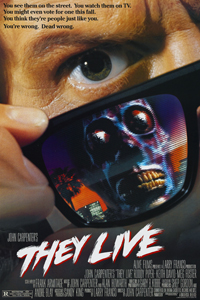 Nada discovers the sunglasses are special. After putting on a pair, he sees the world in black and white and discovers it is not what it seems. Media and advertising hide constant subliminal totalitarian commands to obey and conform. Many in authority and wealthy are actually humanoid aliens with skull-like faces. In a grocery store, Nada confronts an alien woman, who then speaks into her wristwatch notifying others about him. Two alien police officers try to apprehend Nada but he kills them, taking their guns. He goes on a shooting spree, killing several aliens that he encounters in a nearby bank. He sees one vanish using its wristwatch. Nada escapes, destroying an alien flying camera and taking a Cable 54 assistant director Holly Thompson (Meg Foster), hostage. At her hill-top home, Nada tries to convince her of the truth. He also begins suffering migraine headaches from using the glasses. Holly does not believe him. Catching him unaware, Holly knocks him through a window and calls the police. Nada tumbles down a steep hillside and escapes, leaving his belongings behind.
Nada discovers the sunglasses are special. After putting on a pair, he sees the world in black and white and discovers it is not what it seems. Media and advertising hide constant subliminal totalitarian commands to obey and conform. Many in authority and wealthy are actually humanoid aliens with skull-like faces. In a grocery store, Nada confronts an alien woman, who then speaks into her wristwatch notifying others about him. Two alien police officers try to apprehend Nada but he kills them, taking their guns. He goes on a shooting spree, killing several aliens that he encounters in a nearby bank. He sees one vanish using its wristwatch. Nada escapes, destroying an alien flying camera and taking a Cable 54 assistant director Holly Thompson (Meg Foster), hostage. At her hill-top home, Nada tries to convince her of the truth. He also begins suffering migraine headaches from using the glasses. Holly does not believe him. Catching him unaware, Holly knocks him through a window and calls the police. Nada tumbles down a steep hillside and escapes, leaving his belongings behind.
Nada returns to the alley, where he finds the garbage can that he hid the other glasses empty. He sees and enters a nearby garbage truck, where he discovers and saves the box. Frank meets him to give him his paycheck and tells Nada (now considered a wanted man) to stay away. Nada fights with Frank in a long battle, trying to force him to put on a pair of sunglasses. Finally, Nada holds Frank down and puts them on him and he sees the truth. The two rent a hotel room to discuss their predicament. Gilbert (Peter Jason), a member of the shantytown, discovers them and notifies them about a secret meeting with other activists.
There, Nada and Frank are given special contact lenses to replace their sunglasses. They learn from the bearded man’s broadcast that the aliens control Earth as their third world, depleting its resources and causing global warming before moving on to other planets. The aliens use a subliminal signal broadcast into people’s brains to camouflage themselves. Destroying its source will allow everyone on Earth to see their true form. Frank is given an alien wristwatch, a complex radio and teleportation device. Holly appears, apparently joining the cause before apologizing to Nada. However, the police suddenly attack the meeting, killing anyone in sight while Nada and Frank are cornered fighting their way out. Frank accidentally opens a temporary portal by throwing the watch, through which the two jump into a network of underground passages.
The two find the aliens in a grand hall celebrating with their elite human collaborators. The homeless drifter from earlier, now a well-dressed collaborator, believes the two to be collaborators as well. He takes them on a tour of the passages, revealed to link the alien society, including a space travel port. A further passage leads to the basement of Cable 54 station, the source of the aliens’ signal. The two then launch an attack through the building to find the broadcaster on the roof, before meeting Holly and taking her along. As Nada climbs to the signal broadcaster disguised as a satellite dish, Holly kills Frank. Revealed to be a collaborator, she takes aim at Nada and persuades him to stop as an alien police helicopter hovers overhead. Nada complies by dropping his weapon, but then retrieves a hidden pistol from his sleeve and kills her. He then shoots and destroys the broadcaster before being killed by the aliens in their helicopter. Before he dies, Nada gives them the finger as his last gesture now that he scored the final victory over the aliens. With the signal destroyed, humans discover the aliens in their midst on TV, in the bar, and even some humans mating with them.” — Wikipedia.org



